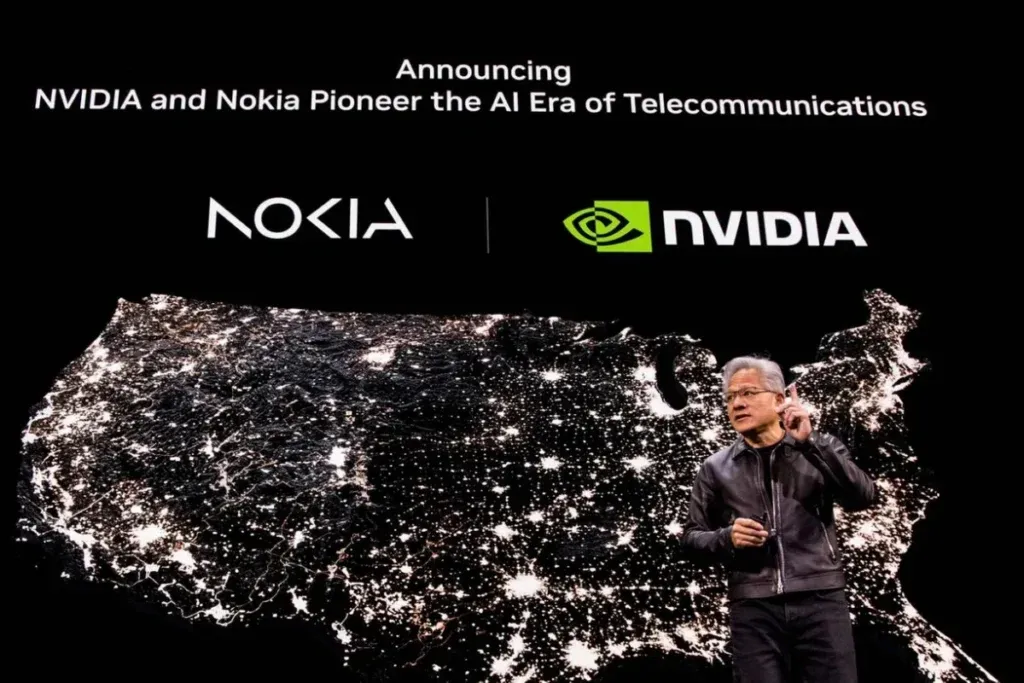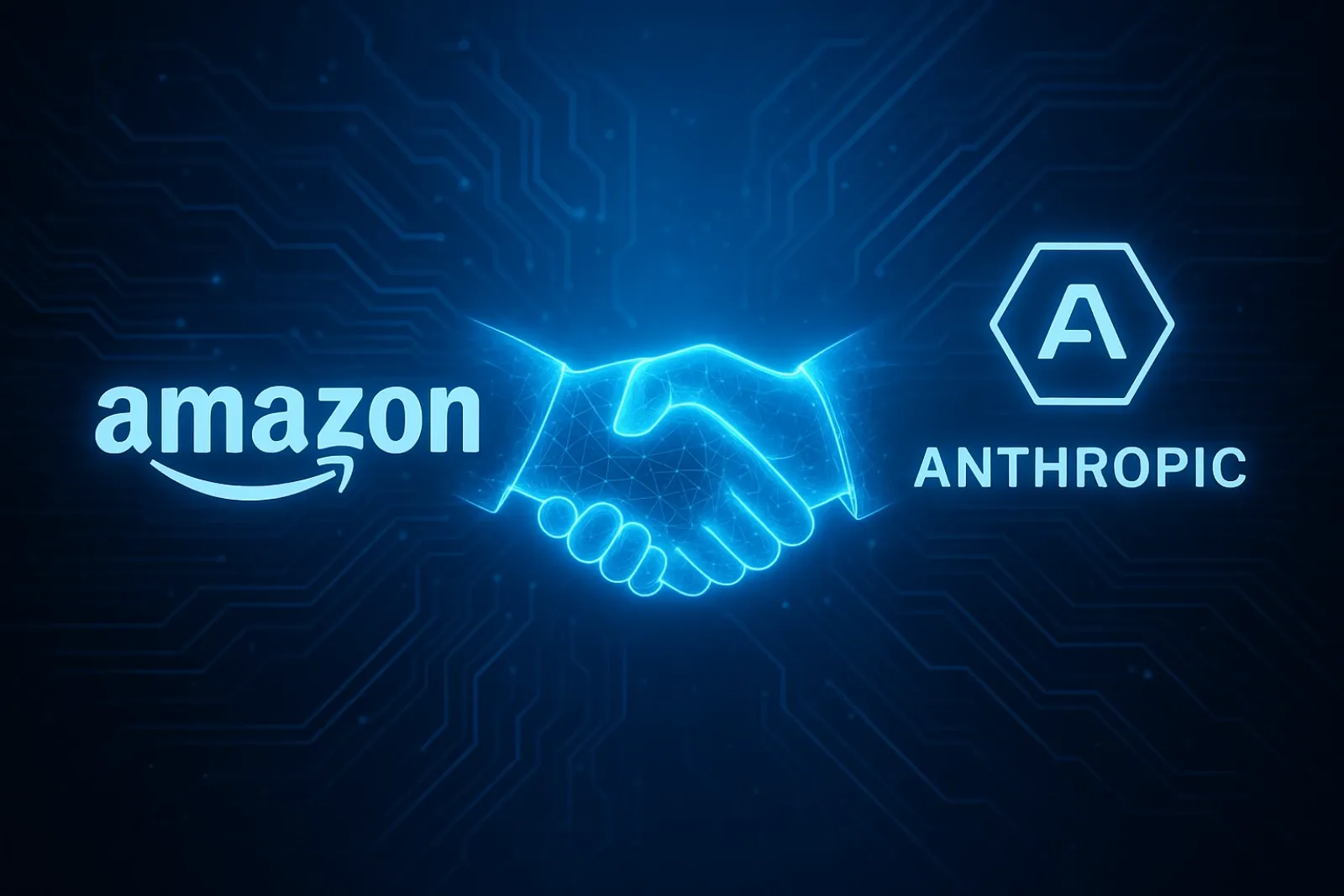The significance of this milestone extends beyond sheer computing power. Project Rainier integrates cloud computing hardware at an unprecedented scale, utilizing nearly half a million custom-designed Trainium2 chips working in concert. This level of integration between hardware design, data center operations, and AI workload optimization sets a new benchmark for what's possible in AI supercomputing.
At the heart of Project Rainier's purpose lies a strategic collaboration with Anthropic, the AI safety company behind the Claude AI model. Anthropic is leveraging this infrastructure to train and deploy Claude across more than one million Trainium2 chips by the end of 2025, providing over five times the compute power previously available for AI model training.
The technological innovations powering Project Rainier include :
- Trainium2 chips : AWS's custom AI accelerators designed specifically for training large-scale models
- UltraServers : Advanced server architecture combining multiple physical servers with high-speed interconnects
- EC2 UltraClusters : Scalable platform architecture enabling fault-tolerant AI training at massive scale
You're witnessing a fundamental shift in how AI infrastructure gets built and deployed.
The Scale and Architecture of Project Rainier
Project Rainier operates with nearly half a million Trainium2 chips, creating unprecedented computational density for AI workloads. This massive deployment represents the largest concentration of AWS-designed AI accelerators in a single location, with plans to double that capacity to one million chips by the end of 2025.
The UltraServer Architecture
The foundation of this infrastructure lies in the UltraServer architecture. Each UltraServer combines four physical servers, with each server housing 16 Trainium2 chips. These 64 chips work together as a unified computing unit, connected through NeuronLinks, AWS's proprietary high-speed interconnect technology.
NeuronLinks enable rapid data movement between chips within an UltraServer, eliminating bottlenecks that typically slow down distributed AI training tasks. You get faster model training because data flows seamlessly across all 64 chips without the latency issues common in traditional server architectures.
Elastic Fabric Adapter (EFA) Networking
Elastic Fabric Adapter (EFA) networking technology extends this connectivity beyond individual UltraServers. EFA creates a high-bandwidth, low-latency network that links UltraServers both within single data centers and across multiple facilities. This distributed architecture delivers two critical advantages :
- Fault tolerance : If one UltraServer experiences issues, workloads automatically redistribute across the remaining infrastructure without interrupting training runs
- Scalability : You can expand computational resources by adding more UltraServers to the network without redesigning the underlying architecture
EC2 UltraCluster : Purpose-Built for Large-Scale AI Training
The entire system operates as an EC2 UltraCluster AWS's purpose-built platform for training large-scale AI models. EC2 UltraClusters treat hundreds of thousands of chips as a single, cohesive computing resource. This design allows AI researchers to train models that would be impossible on traditional cloud infrastructure, where coordination overhead between separate instances typically limits effective scale.
The UltraCluster architecture handles the complexity of distributed training automatically, letting you focus on model development rather than infrastructure management.

AWS's Vertical Integration : From Chip Design to Data Center Operations
AWS's approach to AI infrastructure sets it apart through complete ownership of the technology stack. At Annapurna Labs, AWS engineers design custom AI chip architectures from the ground up, creating silicon specifically optimized for machine learning workloads.
This vertical integration of hardware and software extends beyond chip fabrication into firmware development, operating system optimization, and data center infrastructure design.
The Integrated Approach of Trainium2 Chip
The Trainium2 chip exemplifies this integrated approach. 70% larger than any previous AWS AI computing platform, each chip delivers trillions of calculations per second through specialized tensor processing units. The architecture incorporates high bandwidth memory (HBM3) directly integrated into the chip package, eliminating traditional memory bottlenecks that plague conventional GPU-based systems.
This custom AI chip design philosophy allows AWS to optimize every layer of the computing stack for specific AI training and inference patterns.
Advantages of End-to-End Control
You gain significant advantages from this end-to-end control. AWS engineers can tune the entire pipeline from how data flows through the chip's memory hierarchy to how cooling systems maintain optimal operating temperatures across thousands of servers.
The company's cloud reliability expertise translates directly into hardware design decisions, with built-in redundancy and fault tolerance mechanisms embedded at the silicon level.
Collaboration for Continuous Improvement
Annapurna Labs doesn't work in isolation. The chip design team collaborates directly with AWS's data center architects and machine learning framework developers. This tight coupling means software engineers can request specific hardware features for upcoming AI models, while hardware teams receive immediate feedback on real-world performance characteristics.
The result is a continuously improving ecosystem where each generation of chips addresses actual bottlenecks identified by customers running production AI workloads.
Anthropic Partnership and Claude Model Development on Project Rainier
This partnership represents a strategic alignment between cloud infrastructure and cutting-edge AI development, positioning Anthropic to scale its Claude chatbot capabilities at unprecedented levels.
Anthropic's commitment to AWS infrastructure centers on deploying over one million Trainium2 chips by the end of 2025. This exclusive arrangement provides the computational foundation for both AI model training and inference workloads. You'll find that this scale of deployment enables Anthropic to iterate faster on model improvements while maintaining the performance standards required for enterprise-grade AI applications.
The partnership doesn't limit Anthropic to a single hardware approach. Their strategy incorporates a multi-chip architecture :
- AWS Trainium chips for cost-effective training at scale
- Nvidia GPUs for specialized computational tasks
- Google TPUs for specific optimization requirements
This diversified approach allows Anthropic to match workload characteristics with the most suitable hardware, optimizing both performance and operational costs across different phases of model development.
Claude chatbot's market traction validates this infrastructure investment. Over 300,000 companies have adopted Claude, generating substantial revenue streams within a remarkably short timeframe. This rapid adoption reflects the model's capabilities in handling complex reasoning tasks, code generation, and nuanced conversational interactions.
The technical input Anthropic provides to AWS creates a feedback loop that improves infrastructure efficiency. You benefit from this collaboration through enhanced AI infrastructure that addresses real-world deployment challenges, from latency optimization to resource allocation strategies.

Innovations in Data Center Design and Sustainability Efforts
The $11 billion Project Rainier data center campus in St. Joseph County Indiana represents a massive physical infrastructure investment. This facility currently hosts nearly 500,000 Trainium2 chips, with AWS planning to double that capacity to reach one million chips by year-end. The scale of this deployment required innovative approaches to both construction and operational efficiency.
Advanced Cooling Systems
AWS engineered the St. Joseph County Indiana data center with advanced cooling systems that leverage natural climate conditions. The facilities maximize outside air cooling, eliminating water consumption entirely from October through March. During the warmer months from April to September, the data centers use minimal water for cooling operations. This design philosophy extends to AWS's Pacific Northwest data center locations, where similar climate-optimized cooling strategies reduce environmental impact.
Water Usage Effectiveness
The results speak for themselves. AWS achieved a water usage effectiveness (WUE) of 0.15 liters per kilowatt-hour twice as efficient as the industry average and representing a 40% improvement since 2021. You can see AWS's commitment to becoming "water positive" by 2030 reflected in these metrics.
Energy Sustainability
Energy sustainability forms another critical pillar of Project Rainier's operations. Amazon's entire operations have been powered by 100% renewable energy in data centers since 2023. The company backs this commitment with billions of dollars invested in :
- Nuclear power partnerships for stable, carbon-free baseload energy
- Large-scale battery storage solutions to balance renewable energy intermittency
- Long-term renewable energy procurement agreements
These investments support AWS's broader goal of achieving net-zero carbon emissions by 2040 while maintaining the massive compute power required for AI workloads.

Competitive Landscape and Future Outlook of AI Supercomputing Clusters
Project Rainier positions AWS at the forefront of AI infrastructure, yet the competitive landscape remains intensely dynamic. OpenAI Group PBC has announced plans to deploy 33GW of data center capacity, leveraging Nvidia Corp. and AMD graphics cards alongside custom AI chip sets scheduled for mass production next year. This massive investment signals the escalating arms race in AI computing power.
The comparison reveals distinct strategic approaches :
- OpenAI relies heavily on Nvidia's established GPU ecosystem.
- AWS has pursued vertical integration through custom chip development.
- Google TPUs represent another competing architecture, optimized specifically for TensorFlow workloads and Google's internal AI applications.
- Anthropic's multi-vendor strategy, combining AWS Trainium chips with Nvidia GPUs and Google TPUs, demonstrates how leading AI companies hedge their bets across different hardware platforms to optimize performance across diverse workloads.
Project Rainier's nearly 500,000 Trainium2 chips, expanding to one million by year-end, creates a formidable compute foundation. The UltraServer architecture and Elastic Fabric Adapter networking deliver advantages in data movement speed and fault tolerance that distinguish AWS's approach from competitors relying on third-party hardware integration.
AWS isn't standing still. The company plans to launch Trainium3 machine learning accelerator by year-end, promising four times the performance of current-generation machines. This aggressive development cycle, moving from Trainium2 to Trainium3 within a single year, demonstrates AWS's commitment to maintaining technological leadership. The performance leap will enable training larger models faster while reducing costs per training run, critical factors as AI models continue growing in size and complexity.
Addressing Challenges : Energy Demand, Funding & Community Impact
Project Rainier bringing unprecedented computing power alongside legitimate questions about resource consumption. The scale of nearly half a million Trainium2 chips operating simultaneously demands substantial electricity, placing Project Rainier at the center of conversations about data center energy efficiency and environmental responsibility.
You might wonder how AWS addresses these concerns at such massive scale. The company applies decades of logistics expertise to optimize resource management across every operational layer. The $11 billion Indiana campus demonstrates this commitment through architectural choices that prioritize efficiency from the ground up.
The cooling infrastructure showcases AWS's practical approach to sustainability :
- Zero water consumption from October through March using outside air exclusively
- Minimal water usage during warmer months (April-September)
- Industry-leading WUE metric of 0.15 liters per kilowatt-hour twice as efficient as industry averages
- 40% improvement in water efficiency since 2021
AWS backs these operational efficiencies with renewable energy commitments. The company has powered all operations with 100% renewable energy since 2023, investing billions in nuclear power and battery storage solutions to support its net-zero carbon goal by 2040. The company's target to become "water positive" by 2030 adds another accountability layer to its sustainability roadmap.
Conclusion
The AWS Project Rainier launch marks a defining moment in AI infrastructure evolution. With AWS activates Project Rainier : one of the world's largest AI computing clusters goes live, researchers and developers now have access to unprecedented computational resources that will accelerate breakthroughs in critical areas like drug discovery, genomics research, and climate modeling.
You're witnessing AWS demonstrate leadership across multiple dimensions :
- Custom chip innovation through Trainium2 and upcoming Trainium3 accelerators
- Vertical integration spanning chip design to data center operations
- Sustainability commitment with industry-leading water efficiency and renewable energy matching
- Strategic collaboration with Anthropic to push AI model capabilities forward
This infrastructure doesn't just represent technical achievement, it creates possibilities that didn't exist before. The combination of massive scale, efficient design, and responsible operations positions AWS at the forefront of AI supercomputing. As Anthropic scales Claude training to over one million Trainium2 chips, you'll see what happens when cutting-edge hardware meets ambitious AI development.
FAQs (Frequently Asked Questions)
What is AWS Project Rainier and why is it significant in AI computing ?
AWS Project Rainier is one of the world's largest AI computing clusters launched by Amazon Web Services. It represents a major milestone in AI infrastructure by integrating advanced cloud computing hardware, including nearly half a million custom-designed Trainium2 chips, to enable massive AI model training and inference workloads at scale.
How does Project Rainier's architecture support large-scale AI workloads ?
Project Rainier utilizes AWS-designed Trainium2 chips housed within UltraServers that combine multiple physical servers connected via high-speed NeuronLinks interconnects for rapid data movement. These UltraServers are networked across data centers using Elastic Fabric Adapter (EFA) technology to ensure fault tolerance and scalability, forming EC2 UltraClusters as a foundational platform for efficient AI model training.
What role does vertical integration play in AWS's AI supercomputing capabilities ?
AWS maintains vertical integration by controlling the entire technology stack from designing custom Trainium chips at Annapurna Labs, implementing specialized software, to operating optimized data centers. This approach allows AWS to maximize performance for machine learning acceleration and AI workloads through tailored hardware-software synergy and advanced chip features like high bandwidth memory (HBM3).
How is Anthropic leveraging Project Rainier for the development of its Claude AI models ?
Anthropic PBC exclusively uses AWS infrastructure, specifically Project Rainier, to train and deploy its Claude chatbot models on over one million Trainium2 chips by the end of 2025. Their strategy combines AWS Trainium chips with Nvidia GPUs and Google TPUs to optimize performance across diverse workloads, supporting rapid adoption by over 300,000 companies generating significant revenue.
What innovations has AWS introduced in data center design and sustainability with Project Rainier ?
AWS's $11 billion Project Rainier data center campus in Indiana hosts nearly half a million Trainium2 chips with plans to double capacity. It features cooling innovations that use outside air to minimize water usage achieving best-in-industry water usage effectiveness (WUE) metrics of 0.15L/kWh from October to March. AWS also commits to 100% renewable energy operations since 2023, investing in nuclear power and battery storage solutions for sustainable AI supercomputing.
How does Project Rainier compare to other industry-leading AI supercomputing clusters ?
Project Rainier stands out due to its massive scale and performance powered by custom Trainium2 chips and advanced networking technologies. Compared to competitors like OpenAI's planned deployments or Google's TPU-based infrastructures, AWS plans to introduce the next-generation Trainium3 accelerator delivering four times the current performance, reinforcing its leadership in the competitive AI supercomputing landscape.




